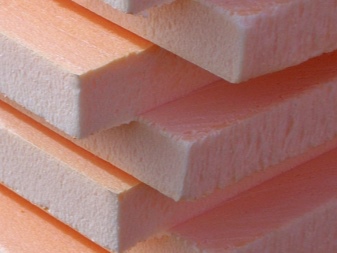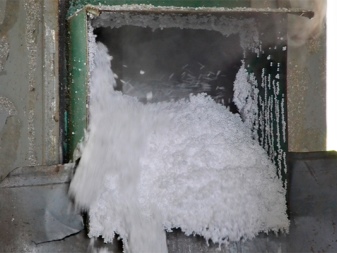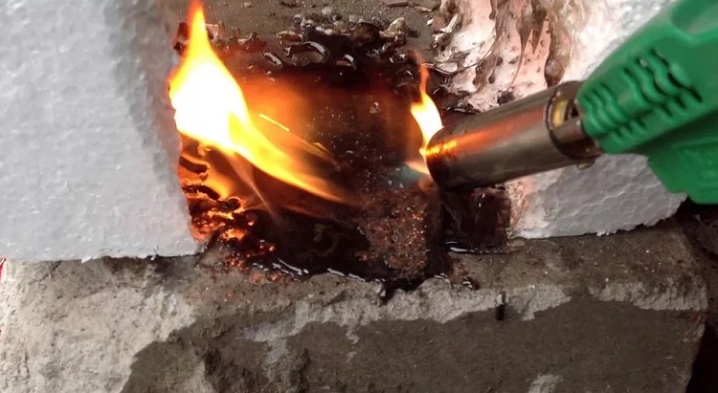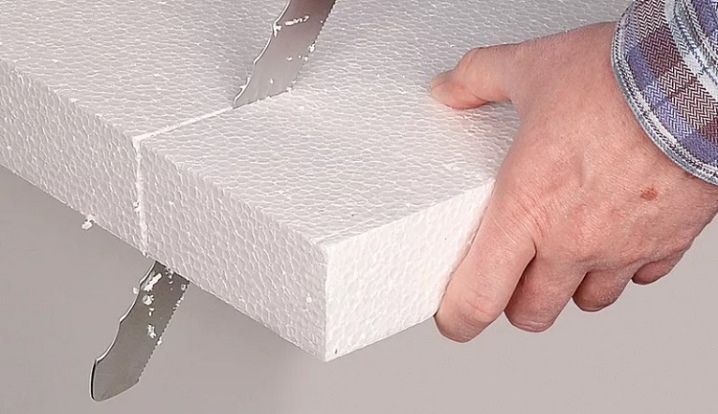What is the difference between polystyrene foam and polystyrene foam?

The popularity of the construction of country houses has recently increased the demand for materials that can be used to insulate these and other buildings. We are talking about expanded polystyrene, polystyrene, mineral wool, etc.
But few people understand how, for example, polystyrene differs from expanded polystyrene. And often because of this, it is not possible to choose the highest quality insulation material for a particular case. Let's try to figure out what is the difference between these heaters and what is better to choose.


Which is warmer?
The first important criterion by which these materials should be compared is thermal conductivity, if we talk about them precisely as insulation materials. It is precisely the thermal insulation properties that determine how high-quality and effective the insulation of the building will be, if you apply a specific material. Expanded polystyrene will be preferable, because the indicator of its thermal conductivity is 0.028 W / m * K. For foam, it is at the level of 0.039, that is, almost 1.5 times more.
The use of expanded polystyrene can significantly reduce the heat loss of the building.


Visual differences
At first glance, it may seem that there is simply no external difference between the materials under consideration. But if you look closely, you will see it quite clearly. Styrofoam is made of expanded polystyrene balls, which are pressed into plates. The cavities between them are filled with air, which makes the product lightweight and makes it possible to retain heat.
As for the creation of expanded polystyrene, it is formed from polystyrene balls, which are pre-melted. This allows a high density compressed material to be obtained. Many believe that outwardly it is similar to hardened polyurethane foam.
In addition, there are certain differences in color. Penoplex has an orange tint, and foam is white.


Comparison of other characteristics
It will not be superfluous to draw comparative parallels according to other criteria, which will make it possible to qualitatively distinguish the properties of products and understand which material will still be more effective and better. The comparison will be carried out according to the following criteria:
- strength;
- price;
- the possibility of processing;
- creation technology;
- moisture and vapor permeability;
- service time.
Now let's talk about each criterion in more detail.


Production technology
If we talk about foam, then it is created using pentane. It is this substance that allows the formation of the smallest pores in the material, which are filled with such a gas. Interestingly, only 2 percent styrene is used in the foam and the rest is gas. All this determines the white color and its low weight. Due to its lightness, it is often used as a heater for the facade, loggia, and in general for various parts of buildings.

The manufacturing process consists of the following stages:
- primary foaming of styrene granules using hot steam;
- transportation of the material, which has already been foamed, to a special drying chamber;
- keeping foamed granules that have already cooled down;
- re-foaming;
- re-cooling the obtained material;
- direct cutting of products from the resulting foam according to the specified characteristics.


Note that the material can be foamed more than 2 times - everything will depend on what density the finished material should have. Extruded polystyrene foam is created from the same raw materials as the foam. And the technological process for preparing such material will be similar. The difference will be at the foaming stage, where, when creating expanded polystyrene, special substances are added to the raw material for the material. Here, the forming process is carried out using high-temperature steam in a special device called an "extruder". It is in it that the mass receives a homogeneous consistency of high smoothness, which can be given various shapes.
Through a hole in the extruder, the liquid material is pushed under high pressure into pre-formed molds. After cooling, the finished product will differ in density, rigidity and plasticity.
This material is often found in stores under the name "Penoplex".


Vapor permeability and moisture permeability
If we talk about vapor permeability, then the heaters under consideration have a completely identical indicator, which is practically zero. Although the foam will still be slightly higher. Because of this, it is preferable to use expanded polystyrene for wall insulation from the inside. But if we talk about moisture permeability, then penoplex will have a slightly lower coefficient.
The foam absorbs more moisture due to the space between the polystyrene balls. If we talk specifically about numbers, then extruded polystyrene foam has a moisture permeability of 0.35%, and foam - about 2%.


Strength
The strength of the compared materials will differ quite significantly. Polyfoam breaks very easily and differs in that it is prone to crumbling. The reason lies in the very structure of the material, which is granular. And in the case of expanded polystyrene, the granules are already melted and glued together, which makes it about 6 times stronger than foam. If we compare the compressive strength of materials, then in this case, the foam will be better.

Life time
Both materials are durable. But with penoplex it will be much larger. At the same time, as mentioned above, the foam begins to crumble over time. To extend the durability of heaters, they must be protected from the effects of ultraviolet radiation and other natural factors.
It should be said that when exposed to fire, foam will be more harmful to humans than expanded polystyrene. After all, it emits carcinogens and harmful compounds during combustion. Expanded polystyrene is safer in this matter.

Processing capability
The handling of both materials is straightforward. They can be cut with even the simplest knife. But in the case of foam, you should be careful because of its fragility.

Price
The price of foam is significantly lower than the cost of foam. And this should be taken into account if a person has a small amount of money. For example, 1 cubic meter of foam will be 1.5 times cheaper than the same volume of foam. For this reason, it is precisely it that is used in the construction of housing, because it turns out to significantly reduce the cost of building a building.

What is the best choice?
If we talk about what is better to choose for house insulation, then there is no definite answer. Different materials should be preferred in different places. For example, to insulate the floor from the inside and walls, it is worth using low-density foam insulation. In addition, it can be used for insulation under cladding with various materials, which differ in vapor permeability. This is due to the fact that the foam has an increased adhesion rate to self-leveling floors, plasters and various types of screeds.
But expanded polystyrene will be in demand if it is necessary to use a stable material under conditions of serious contact pressure, high temperature differences, as well as watering. That's why it is usually used for insulating various non-residential premises, building foundations, concrete floors in garages, facades and roofs, as well as summer cottages with temporary heating.
In addition, when choosing a material specifically for external insulation, one should not forget that the foam is very poorly tolerated by ultraviolet radiation. And polystyrene foam can easily withstand such an effect for several years without much damage to its structure.














Foam is a general name for a whole group of materials obtained by foaming plastics. Since a variety of plastics can be foamed, there is a huge variety of foams. For example, if polystyrene is used as a raw material, polystyrene foam is obtained, if polyurethane is used as a raw material, polyurethane foam is obtained (one of the types is polyurethane foam), polyvinyl chloride foam is obtained from polyvinyl chloride.
The comment was sent successfully.